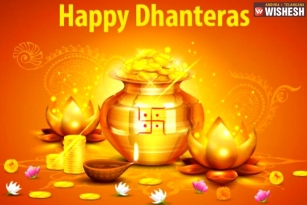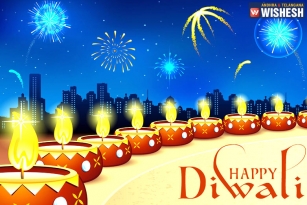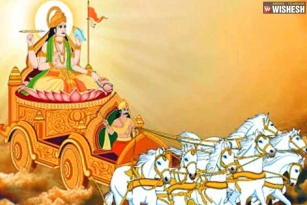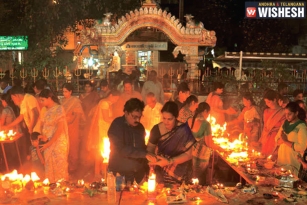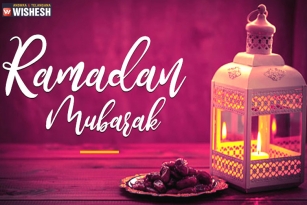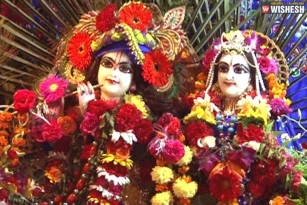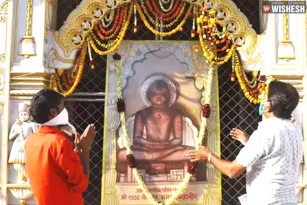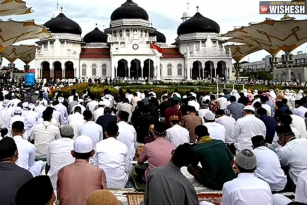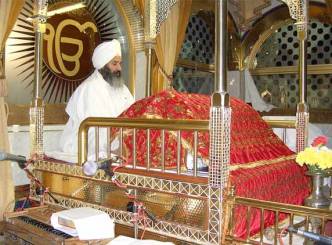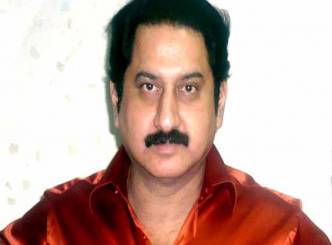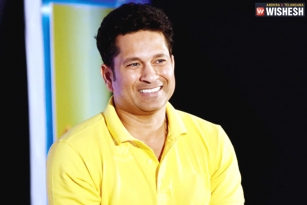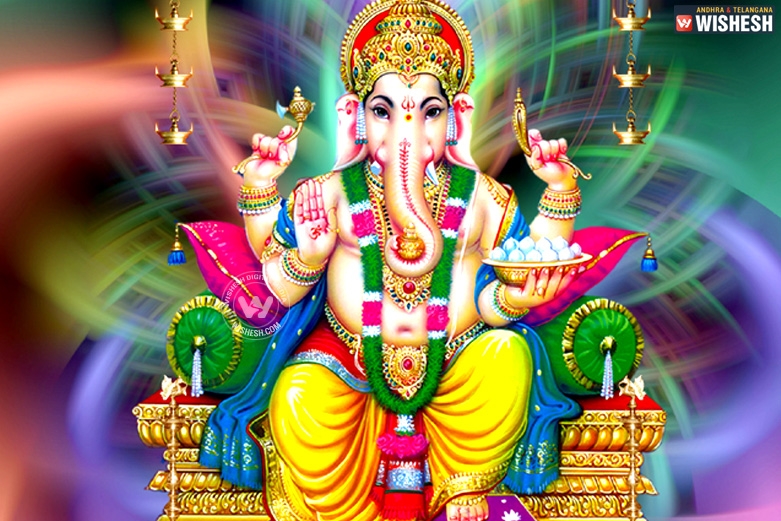
Ganesha Chaturthi is celebrated in honour of the god Ganesha, the elephant-headed, remover of obstacles and the god of prosperous beginnings and wisdom. The festival, is observed in the Hindu calendar month of Bhaadrapada, starting on the shukla chaturthi (fourth day of the waxing moon period) in the month of August and September. The festival lasts for 10 days, ending on Anant Chaturdashi (fourteenth day of the waxing moon period).
The festival has been celebrated as a public event since the days of Shivaji (1630–1680). The festival, as celebrated in Maharashtra today, was introduced by Bhausaheb Laxman Javale in 1892. In 1893 Lokmany Tilak praised the concept of Sarvajanik Ganesh Utsav. In 1894 Nationalist Leader Lokmany Tilak installed Ganesh idol in Kesari Wada too and started preaching Ganesh Utsav. Tilak recognized the wide appeal of the deity Ganesha as "the god for everybody", and popularized Ganesh Chaturthi as a national festival in order "to bridge the gap between Brahmins and 'non-Brahmins' and find a context in which to build a new grassroots unity between Hindus", and generate nationalistic fervour among people in Maharashtra against the British colonial rule.
It is celebrated grandest and most elaborate in Maharastra, Karnataka and Telangana which lasts for 10 days, ending on the day Anant Chaturdashi. It is also celebrated widely in Terai region of Nepal and by Hindus in the United States, Canada, Mauritius, Singapore, Indonesia, Malaysia, Thailand, Cambodia, Burma, Fiji, New Zealand, Trinidad & Tobago, and Guyana.
Legend
Consort of Lord Shiva. Parvati created Ganesha out of sandalwood paste that she used for her bath and breathed life into the figure. She set him with the task of guarding her door while she bathed. Lord Shiva, who came to meet Parvathi was not allowed by Ganesha as he know him. Lord Shiva became enraged and asked his follower Ganas to teach the child some manners. Ganesha who was very powerful, being born of Parvati, the embodiment of Shakti, defeated Shiva's followers and declared that nobody was allowed to enter while his mother is bathing.
The sage of heavens, Narada along with the Saptarishis sensed the growing turmoil and went to appease the boy, but the efforts turned futile. Angered, the king of Gods, Indra attacked the boy with his entire heavenly army, but wqs defeated. By then, this issue had become a matter of pride for Shiva and he severed the head of the child. Parvati seeing this became enraged. Seeing Parvati in anger Shiva promised that her son will be alive again. The devas searched for the head of dead person facing North, but they found only the head of a dead elephant. They brought the head of the elephant and Shiva fixed it on the child's body and brought him back to life. Lord Shiva also declared that from this day the boy would be called Ganesha (Gana Isha: Lord of Ganas).
Celebrations
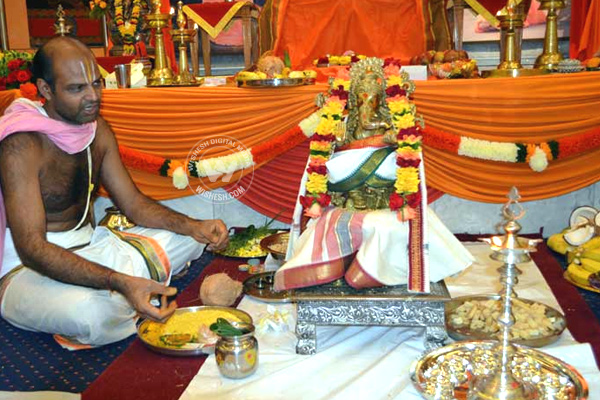
Ganesha Chaturthi starts with the installation of Ganesha statues in colorfully decorated homes and specially erected temporary structures mandapas (pandals). The pandals are erected by the people or a specific society or locality or group. The pandals are specially decorated for the festival, using decorative items like flower garlands, lights, etc.
The priest, with the chanting of mantras invokes the presence of Ganesha using the statue as a channel or body for his energy. This ritual is known as Pranapratishhtha. After this Shhodashopachara (16 ways of paying tribute) follows. Coconut, jaggery, modaks, durva (trefoil) blades of grass and red flowers are offered. The statue is anointed with red unguent, typically made of kumkum and sandalwood paste. Throughout the ceremony, Vedic hymns from the Rig Veda, the Ganapati Atharva Shirsha Upanishad and the Ganesha stotra from the Narada Purana are chanted.
The festival is usually for 10 days. On the 11th day, the image is taken in a procession accompanied with dancing and singing, to be immersed in a river or the sea symbolizing a ritual to see-off of the Lord in his journey towards his abode in Kailash while taking away with him the misfortunes of all humankind.
Festival cuisine
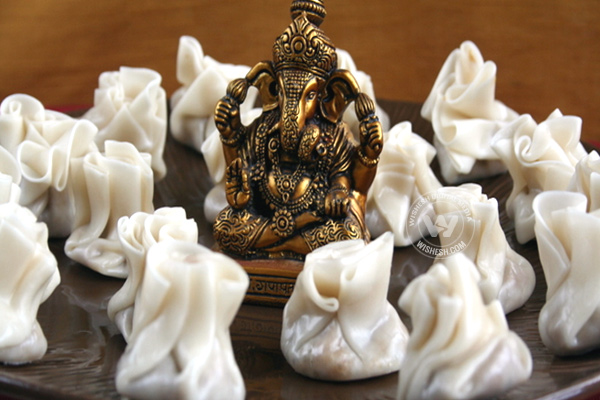
The main sweet dish during the festival is the modak (modak in Marathi, modakam / kudumu in Telugu, modaka / kadubu in Kannada, kozhakatta / modakkam in Malayalam and kozhukattai / modagam in Tamil). Modak is a dumpling made from rice flour / wheat flour with a stuffing of fresh or dry-grated coconut, jaggery, dry fruits and some other condiments. It is either steam-cooked or fried. Another popular sweet dish is the karanji (karjikai in Kannada) which is similar to the modak in composition and taste but has a semicircular shape.
In Telangana modakkam (rice flour dumplings stuffed with coconut and jaggery mixture), Laddu, Vundrallu (steamed coarsely grounded rice flour balls), Panakam (jaggery, black pepper and cardamom flavored drink), Vadapappu (soaked and moong lentils), "Chalividi" (cooked rice flour and jaggery mixture), etc., are offered to Ganesha along with Modakams. These offerings to god are called Naivedyam in Telugu. Traditionally, the plate containing the Modak is filled with twenty-one pieces of the sweet.
By Premji


